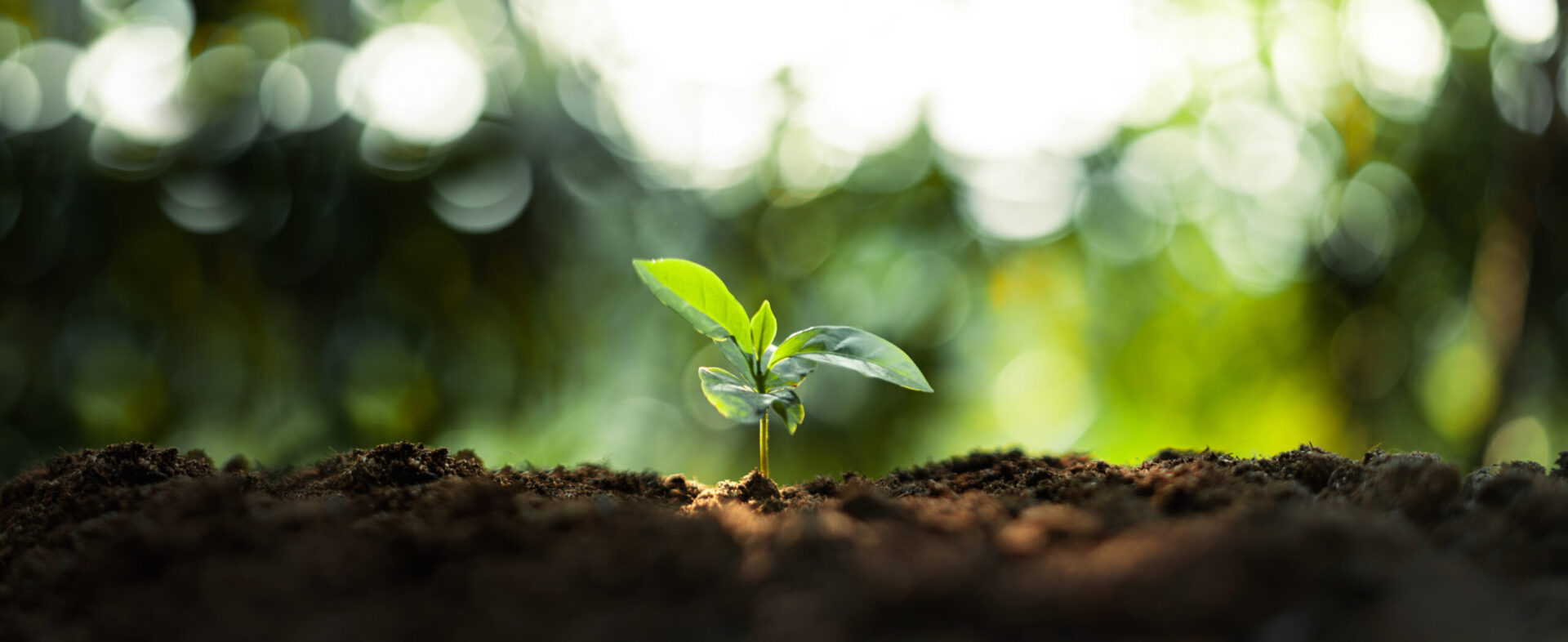Have you ever wondered why a cup of coffee from Ethiopia has such a unique flavor profile? Behind every sip is a fascinating story that starts long before the coffee beans are roasted - in the very soil where the coffee plants grow. The soil is more than just a substrate; it's a living composition that shapes the coffee, where the soil creates a symphony of flavors with minerals, organic matter and microorganisms.
Just as an artist uses his palette, each region has its own unique “earth painting” that gives coffee its distinctive character. In this article, we delve into the earthy secrets that make the difference between an ordinary cup of coffee and a truly memorable taste experience.
What is soil?
Soil is a term used to describe the physical, chemical and biological properties of the soil in which a crop is grown (in this case coffee beans). The soil or soil, is defined as the uppermost part of the ground that is influenced by climate, organisms, relief and time. Soil is like a living factory where a multitude of processes are constantly taking place.
The soil consists of mineral soil, organic material and living organisms such as earthworms. Its composition and structure vary depending on factors such as rainfall, temperature and bedrock. By understanding the complexity of soil, we can better appreciate its impact on agriculture and ecosystems.
Why the Earth matters so much
Think of the soil as coffee's first kitchen. This is where the coffee bush gets all its nutrients, water and minerals. Different soils 'cook' the plant in different ways, which ultimately affects what the beans taste like.
Soils that drain well yet retain nutrients provide the perfect conditions for coffee bushes. However, if the soil lets water through too quickly or retains it for too long, the taste is directly affected.
Soil secrets behind perfect coffee
pH - the coffee balancing act
The pH value determines how acidic or alkaline the soil is. For coffee, it's a bit like finding the right temperature for the shower - it should be just right. Coffee bushes are a bit picky, they want the soil to be just neutral, preferably between 6.0 and 6.5 on the pH scale. Too acidic and the plant can't absorb nutrients properly. Too alkaline and the same problem occurs.
Our tip: When reading about coffee, look out for regions with "well-balanced soil" - that's often code for the right pH!
Nutrients - coffee's daily vitamins
Just as we need vitamins to feel good, coffee bushes need nitrogen, potassium and phosphorus to produce good beans.
- Nitrogen gives the coffee bush strength to grow
- potassium helps with flavor development
- Phosphorus is important for the roots to develop properly
When the soil has the right balance of these, the coffee becomes both more flavorful and more complex.
Drainage - not too much, not too little
The soil needs to let enough water through. Too much water left behind = roots rot and coffee becomes flat. Too fast drainage = coffee bushes don't get enough nutrients and coffee becomes weak. The best soil allows excess water to pass through but retains enough for nutrients to be absorbed.
Soil organisms - the living life below the surface
The soil is full of life - worms, bacteria, fungi and millions of micro-organisms working around the clock. These little heroes break down organic matter and make nutrients available to the coffee bush. It's like having your own boss preparing food for the plant.
The three soil types that make the biggest difference
Volcanic soil - the master of complexity
Volcanic soil is found around volcanoes (logical, right?) and is packed with minerals like phosphorus and potassium. What this means for the flavor: Coffee from volcanic soil often becomes complex with distinct fruit tones, sometimes even a little chocolate or berry notes. It's as if the soil "spices up" the coffee right from the start.
Our tip for first impressions: Smell the coffee before you brew - coffees from volcanic soil often smell more intense than other varieties. It's like a taste preview!
Sandy soil - the gentle friend
Sandy soil allows water to pass through quickly, which means that the nutrients do not stick as well. It sounds negative, but the result can be really nice.
What it means for the taste: The coffee is often milder and more nutty. Perfect for those who like a calmer coffee without too many surprises.
Clay soil - the persistent one
Clay soil holds water like a sponge, which can be both good and bad. Properly managed, it gives coffee bushes an even supply of water and nutrients.
What it means for the taste: Often you get a full-bodied coffee with good balance, but sometimes it can be a bit "flat" if the soil becomes too compact.
Famous coffee regions and their soils
- Colombia - the land of volcanoesMost of Colombia's best coffee regions are located on volcanic soil. Here you'll often get coffees with notes of citrus, caramel and chocolate. Try a Colombia Huila next time - it's a perfect example of what volcanic soil can do.
- Brazil - the land of diversity: In Brazil, you'll find everything from sandy soil to more nutrient-rich soil. The coffee from the sandy soils of the Cerrado region is often nutty and smooth - perfect for a morning snack.
- Ethiopia - the home of origin Here, volcanic soil mixes with high altitudes. The result? Coffee that can taste like berries, tea or even flowers. In fact, it was here that I first realized how much the soil affects the taste.
- Guatemala - altitude and volcanoes The Antigua region of Guatemala has volcanic soil combined with perfect altitude. The coffee is often rich with notes of spices and dark chocolate.
How to use the knowledge when buying coffee
Our top tips for buying coffee:
- Read the origin story - Good coffee roasters will tell you where the coffee comes from, at what altitude it was grown and sometimes even about the soil. This information is worth its weight in gold!
- Systematic testing - Buy two coffees from the same country but different regions. Taste them side by side - you will be surprised by the differences.
- Keep an eye out for these keywords:
- "Volcanic soil" = complex and fruity
- "High altitudes" = often acidity and clarity
- "Slow drying" = richer taste
For beginners: Start with coffee from Colombia or Guatemala. They often have a good balance and are forgiving even if the brew is not perfect.
For the coffee enthusiast: Try coffee from Ethiopia or Kenya. Discover flavors you never knew existed in coffee.
Our trick to becoming a coffee expert: Save packs from coffees you like and look for patterns in the soil. After a while you will notice "Aha, apparently I like volcanic soil from high altitudes!" This makes buying coffee much easier.
Our secret trick
Next time you're in a good coffee shop, ask the barista or read the packaging about the origin of the coffee. Most people love to tell you and you learn something new every time. You will soon notice patterns between region and taste!
Remember: There is no 'best' - only what suits your taste. The soil gives coffee its personality, but you decide what you like. So dare to try new things and discover your next favorite flavor!
Have you discovered an exciting coffee region? Share your findings with us!



